
- Home
- DCEmu Featured News Articles
 DCEmu Homebrew Emulation & Theme Park NewsThe DCEmu the Homebrew Gaming and Theme Park Network is your best site to find Hacking, Emulation, Homebrew and Theme Park News and also Beers Wines and Spirit Reviews and Finally Marvel Cinematic Universe News. If you would like us to do reviews or wish to advertise/write/post articles in any way at DCEmu then use our Contact Page for more information. DCEMU Gaming is mainly about video games -
DCEmu Homebrew Emulation & Theme Park NewsThe DCEmu the Homebrew Gaming and Theme Park Network is your best site to find Hacking, Emulation, Homebrew and Theme Park News and also Beers Wines and Spirit Reviews and Finally Marvel Cinematic Universe News. If you would like us to do reviews or wish to advertise/write/post articles in any way at DCEmu then use our Contact Page for more information. DCEMU Gaming is mainly about video games -
If you are searching for a no deposit bonus, then casino-bonus.com/uk has an excellent list of UK casino sites with sorting functionality. For new online casinos. Visit New Casino and learn how to find the best options for UK players. Good luck! - Explore the possibilities with non UK casinos not on Gamstop at BestUK.Casino or read more about the best non UK sites at NewsBTC.
-
DCEmu Featured News Articles
by Published on June 14th, 2011 02:16- Categories:
- PSP News
Hi all, we are carrying on with our bringing back of DCEmu sites and the biggest of them all is now back (bar the forums), its just taken me 6 hours to reupload the site, Now PSP News also covers the PSPvita and Xperia Play.
PSP News is one of the biggest homebrew sites and archives for the PSP anywhere in the world, the site was up before the cracking of the PSP, during the first days of homebrew and well after 3 months offline back to where it belongs.
Just in case you need the link here it is --> http://psp-news.dcemu.co.uk/
Theres literally thousands of releases for the PSP Homebrew scene on there, ...by Published on June 14th, 2011 01:16- Categories:
- Pandora News
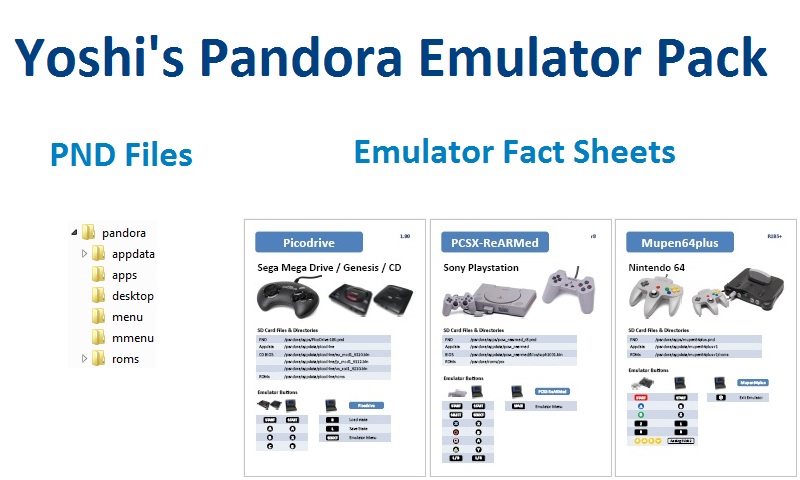
Newly released for Pandora
The package contains SD card ready PNDs and fact sheets for the following emulators:
Dega 1.16-4 (SMS)
DOSBox 0.74 (PC)
GnGeo 0.8.3 (Neo Geo)
GnuBoy 1.0.5 (GBC)
gpfce 0.4 (NES)
gpfce-gp2x 0.4 (NES)
gpSP (GBA)
Handy 0.5b (Atari Lynx)
HuGo 1.1.0 (PC Engine)
MAME4ALL 2.5b7 (Arcade)
Mednafen r2 (Neo Geo Pocket/PC Engine/Others)
Mupen64plus R1B5+ (N64)
PCSX-ReARMed r8 (PSX)
Picodrive 1.80 (SMD)
PocketSNES 6.5.0 (SNES)
RACE 1.0b3 (Neo Geo Pocket)
Snes9x4P v20110310 (SNES)
UAE4ALL v1.1.1.19 (Amiga)
Thanks to all authors for the hard work.
Version 0.2 : DOSBox 0.74 (PC) added
Version 0.3 : UAE4ALL v1.1.1.19 (Amiga) added
Version 0.4 : Mednafen r1 (PC Engine) added + fact sheets updated
Version 0.5 : Mednafen r2 (Neo Geo Pocket) added + fact sheet quick ref added
http://dl.openhandhelds.org/cgi-bin/...?0,0,0,0,5,404 ...by Published on June 14th, 2011 01:12- Categories:
- Dingoo News
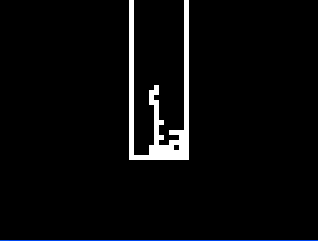
Newly released for Dingoo:
chip-8 emulator for dingux, original author : garzul
http://dl.openhandhelds.org/cgi-bin/...0,0,0,0,73,510 ...by Published on June 14th, 2011 01:11- Categories:
- Dingoo News
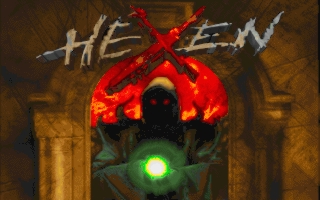
Newly released for Dingoo:
Final (I guess, all fixed) version of my HHexen port, featuring: sound and music, save autonaming. adjusted menus, improved controls, screen scaling and lots of speedups.
What's updated?
-> Aiming
-> Default controls
-> Config/save folder altered from ./ to ~/.hhexen/ (Now uses the home directory)
-> Screen Scaling (Activated on the "more...' section of the options)
-> Source code!
Be happy!
http://dl.openhandhelds.org/cgi-bin/...0,0,0,0,30,509 ...by Published on June 14th, 2011 01:08- Categories:
- Caanoo News
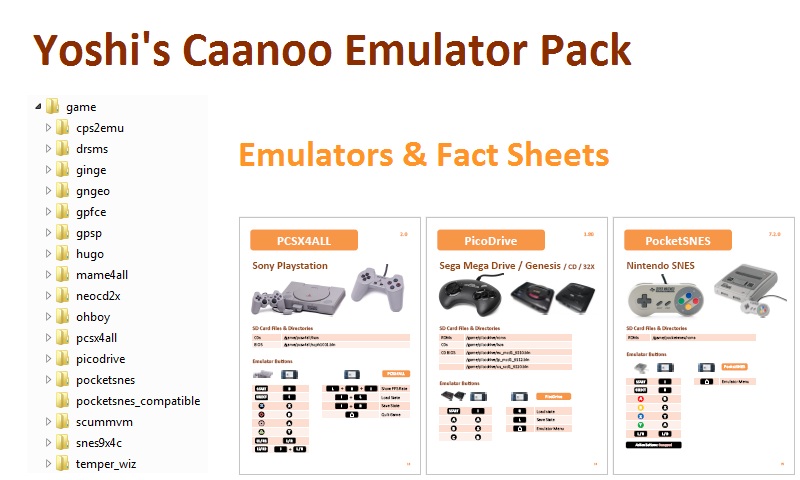
Newly released for Caanoo
The package contains the following SD card ready emulators and fact sheets:
CPS2Emu v8 (CPS2)
DrSMS v2 (SMS)
Ginge 1.0 r4 (GP2X)
GnGeo 0.7 (Neo Geo)
gpfce 0.4+ (NES)
gpSP v0.9.2 (GBA)
HuGo v1.1.0 (PCE)
MAME4ALL 2.6 (Arcade)
NeoCD2x 1.0a (Neo Geo CD)
OhBoy 1.0.0 (GBC)
PCSX4ALL 2.0 (PSX)
PicoDrive 1.8.0 (SMD)
PocketSNES 7.2.0qf (SNES)
ScummVM 1.2.1 (Classic Adv Games)
Snes9x4C v20101227 (SNES)
Temper Wiz 0.75 with Ginge (PCE)
Thanks to all authors for the hard work.
Version 0.2 : Fact sheets updated
Version 0.3 : DrSMS updated + fact sheet corrections + quick ref added
http://dl.openhandhelds.org/cgi-bin/...?0,0,0,0,5,696 ...by Published on June 14th, 2011 01:05- Categories:
- Wiz News,
- Caanoo News,
- Pandora News
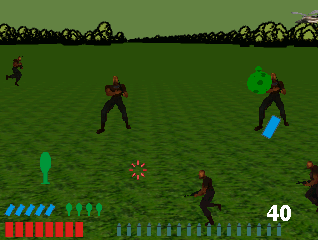
Newly released for Wiz, Caanoo and Pandora
A game by Colombian Developers.
Gp2x Wiz / Caanoo & Pandora port by GECA soft.
http://dl.openhandhelds.org/cgi-bin/...?0,0,0,0,3,543 ...by Published on June 14th, 2011 01:03- Categories:
- Wiz News
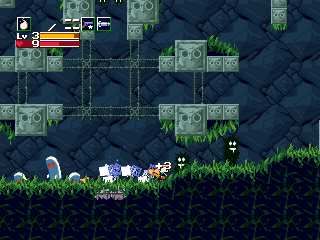
Newly released for Wiz
An unfinished, but fully playable port of the legendary indie platformer
http://dl.openhandhelds.org/cgi-bin/...?0,0,0,0,3,543 ...by Published on June 14th, 2011 00:58- Categories:
- Nintendo DS News
News via http://dsx86.patrickaalto.com/DSblog.html
For the past week I have been working on the new audio system for DS2x86. As I mentioned in the previous blog post, the code was mostly done by last Sunday, but the problem was that it sounded very bad and also seemed to cause the games to hang much more frequently than with the old audio code. The current status is that the new code is in use, and works at least as well (if not better) in the games that had audio also with the old code. The new code also has ADPCM audio supported, and it works fine in Warcraft, when the original code either failed to initialize or caused the game to crash very often.
I have been using four different games to test the new audio code, as each of these games use somewhat different SoundBlaster audio features:
Supaplex uses the plain simple DMA transfers, playing one digitized sample at a time. The samples have varying sample rates.
Doom uses auto-initialize DMA method, with a 1024-sample buffer but with an IRQ request after every 128 samples. The playing rate is 11kHz.
Warcraft uses auto-initialize DMA with 2048-sample buffer and IRQ request every 1024 samples, with 11kHz sample rate.
Duke Nukem 2 uses various ADPCM sample formats with simple DMA transfers, and with varying sample rates.
I am using 22050Hz audio playing rate in DS2x86. In the original audio code I had initialized the DSTwo audio transfers to 3*128 samples per transfer (with the ds2io_initb() call), as that was the closest I could get to be able to send a new audio buffer within my 60Hz main emulation timer handler. That number was derived from the fact that I would need to send 367.5 (= 22050/60) new samples during each 60Hz timer interval, and the need of the transfer size to be divisible by 128. Using the 60Hz timer for this also meant that I could not emulate an SB IRQ faster than at 60Hz (which again corresponds to 367.5 samples at 22050Hz). For example Doom wanted to get an SB IRQ after every 128 samples have been played. As Doom played the audio at 11kHz (which is very close to half the 22050Hz playing rate I use), I should have generated an SB IRQ after every 256 output samples, or at 85Hz (= 11000/128). To make the audio in Doom work, I had coded a special hack into my audio code where I slowed down the sample rate if a game wants SB IRQs faster than my code could provide them. Obviously this was not a proper solution, so in my new audio code I wanted to handle this situation better.
The basic idea of my new audio code is that the emulation interrupt runs at 4*60Hz (240Hz) and calls the screen and keyboard handling only during every fouth interrupt. The audio emulation is handled at 240Hz, which should be fast enough for any SB IRQ frequency a game would need. By last Sunday I had implemented this new audio code, using 128 samples per transfer in ds2io_initb(), with a separate 1024-sample ring buffer that is filled in the 240Hz interrupt. Since 22050/240 = 91.875, I had designed the ring buffer filling algorithm so that it tried to fill the buffer with approximately 96 samples in each 240Hz interrupt, with the actual amount adjusted by the number of DSTwo IO/ layer audio buffers in use. Since the DSTwo I/O layer has 4 audio buffers, I calculated the needed new samples as 128-ds2_checkAudiobuff()*32. And in every interrupt where the ring buffer had >=128 samples, I sent the buffer to the DSTwo I/O layer.
I thought this code was much better than the original one, however there were several problems that took me pretty much the whole of last week to fix:
Doom had a weird looping/stuttering problem, where parts of the audio kept repeating.
The audio had a horrible constant warble, regardless of what audio was playing.
All games (playing audio) kept hanging within a minute or two of playing them.
I first debugged the behaviour in Doom, as that was one of the main problematic games I tried to fix with the new code. At last I found that the problem was in how the timer and SB IRQs interract in the Doom code. For some peculiar reason, Doom does not fill the 1024-sample DMA buffer during the SB IRQ, but instead in the timer IRQ. And with my new 240Hz maximum SB IRQ frequency, when the DSTwo audio buffers were empty, Doom could get two SB IRQs with no timer IRQ in between, and thus it skipped one 128-sample block in the DMA buffer, which in turn caused that block to play some old data that was in the buffer. I fixed this problem by fine-tuning the amount by which I fill the ring buffer, and never continuing to fill it after it was time to send the SB IRQ to the emulated game.
The second problem with the warbling sound seemed to be simply caused by the 128-sample transfer size. The DSTwo I/O layer does not seem to work very well with anything less than 512-sample transfer sizes. I tested all sizes between 128 and 512, and the 512-sample transfer size sounds best by a wide margin. It would be better to use smaller transfer sizes, as the larger the transfer size the bigger ...by Published on June 14th, 2011 00:52- Categories:
- PSP News,
- Nintendo 64 News
News via http://forums.daedalusx64.com/viewto...t=2640&start=0
DaedalusX64 is the best Nintendo 64 Emulator available exclusively for the PSP. To eliminate some frequently asked questions: No, the Emulator is not perfect, so any graphical bugs, or speed issues are considered normal. Yes, the audio does not always play full speed and can cause the Emulator to crash.
What's changed in this revision:
Revision 717
[=>] Merged from Dev branch:
Rev 302 - Corn
[+] Implemented RumblePak support
[+] RumblePak / MemPak option added to global options (RumblePak shakes screen when active).
Note: Enable RumblePak before booting ROM (also enable clean scene if there is garbage left on screen when shaking)
Rev 303 - Salvy
[!} Separate rumblepak from mempak to avoid any conflicts and keep code tyde
Rev 304 - Salvy
[!] Corrected regression in dynarec from 366 that caused random lock ups in several games
Rev 305 - Salvy
[~] Forgot to revert these in 644
download and give feedback via comments ... ... ...by Published on June 14th, 2011 00:44- Categories:
- PSP News
News via http://www.nintendomax.com/viewtopic...e01e1ee39e3a54
Alekmaul offers version 1.3 and 1.4 of " A5200DS "emulator for the Atari 5200 for Nintendo DS / DSi.
V1.4: 13/06/2011
* Add automatic detection chip for 16k Roma (Goal You Can Change It)
* Button L to display / hide FPS
* Add R & L to change Rom
* Really fix flickering bp alphalerp is back & SCREEN IS smoother
* Better sound (not so much ...)
V1.3: 12/06/2011
* Fix With iEvo bp (it hangs menu)
V1.2: 11/06/2011
* Fix pb with B button (Now You Can Use bombs in HERO)
* Remove argc / argv management (test for Another World With history ievo)
* Fix flickering bp (remove alphalerp for now)
.
download and give feedback via comments ... ... ...
 Search DCEmu
Search DCEmu Advert 3
Advert 3 News Categories
News Categories
 Links of InterestReview and compare Poker sites out of Gamstop
Links of InterestReview and compare Poker sites out of GamstopCheck out the casinos not on gamstop UK guide 2021 at Justuk.club
Find recommended online casinos in Japan at onlinecasinoosusume.jp
 Sony Consoles News
Sony Consoles News Nintendo Consoles News
Nintendo Consoles News Sega Consoles News
Sega Consoles News Apple & Android News
Apple & Android News Xbox Consoles News
Xbox Consoles News Open Source Consoles News
Open Source Consoles News DCEmu News Archive
DCEmu News ArchiveJuly 2025 Su Mo Tu We Th Fr Sa 1 2 3 4 5 6 7 8 9 10 11 12 13 14 15 16 17 18 19 20 21 22 23 24 25 26 27 28 29 30 31
 Advert
Advert Retro Consoles News
Retro Consoles News PC News
PC News Latest DCEmu News
Latest DCEmu News DCEmu Network Sites
DCEmu Network SitesDCEmu Portal
DCEmu Current Affairs
DCEmu Forums
DCEmu Console Sites
Apple & Android News
Sega News
Nintendo News
Open Source Handhelds
PC Gaming
Sony Console News
Xbox News
DCEmu Misc Sites
Retro Homebrew & Console News
DCEmu Reviews
Wraggys Beers Wines & Spirits Reviews
DCEmu Theme Park News
Gamer Wraggy 210
DCEmu Homebrew Coder Sites
Chui Dreamcast Developer
 Forum StatsNumber of Members: 484,080
Forum StatsNumber of Members: 484,080
Total Threads: 213,201
Total Posts: 764,553
Currently Online: 2537
Newest Member: HanoraSakura99
 What is the DCEmu Homebrew & Gaming NetworkWelcome to the DCEmu Homebrew and Gaming Network. This Network of sites is owned and ran by fans of all games consoles, we post news on all the consoles we cover about hardware aspects, gaming and Homebrew. Homebrew and Emulation are software thats made using free and legal tools to play on games consoles. This Network is the only worldwide network of sites where coders can upload and post comments they deserve for all their hardwork. We have a Network that currently supports PSVita, WiiU, Nintendo Wii, Xbox360, PS3, PS2,PS1, Snes, N64, Gameboy, Nes, Xbox, Gamecube, Nintendo DS, PSP, GBA, Dreamcast, Sega Saturn,3DS, DSi, Switch, PS4, Pandora, xboxone, GP2X, iPhone, Windows Phone, iPad, Android and also Mobile Phone Emulation. When new consoles appear we will expand to cover those consoles. We also cover Theme Park News and news and reviews of Beer, cider, lager, wines and spirits. news of their own releases and get the credit and Please help DCEmu become stronger by posting on the forums every day and make our community larger.
What is the DCEmu Homebrew & Gaming NetworkWelcome to the DCEmu Homebrew and Gaming Network. This Network of sites is owned and ran by fans of all games consoles, we post news on all the consoles we cover about hardware aspects, gaming and Homebrew. Homebrew and Emulation are software thats made using free and legal tools to play on games consoles. This Network is the only worldwide network of sites where coders can upload and post comments they deserve for all their hardwork. We have a Network that currently supports PSVita, WiiU, Nintendo Wii, Xbox360, PS3, PS2,PS1, Snes, N64, Gameboy, Nes, Xbox, Gamecube, Nintendo DS, PSP, GBA, Dreamcast, Sega Saturn,3DS, DSi, Switch, PS4, Pandora, xboxone, GP2X, iPhone, Windows Phone, iPad, Android and also Mobile Phone Emulation. When new consoles appear we will expand to cover those consoles. We also cover Theme Park News and news and reviews of Beer, cider, lager, wines and spirits. news of their own releases and get the credit and Please help DCEmu become stronger by posting on the forums every day and make our community larger.
All times are GMT +1. The time now is 11:04.
Powered by vBulletin® Version 4.2.3
Copyright © 2025 vBulletin Solutions, Inc. All rights reserved.
Copyright © 2025 vBulletin Solutions, Inc. All rights reserved.
(Morbid Suite vB4) Style design and Concept by DigitalvB.com





 Menu
Menu
Catherine: Full Body’s English translation for the Vita